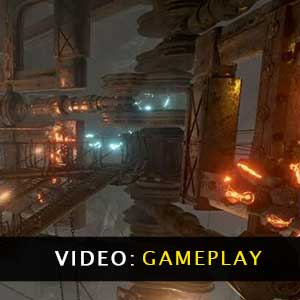
Obduction’s story - that of a tiny community gone to hell, caught up in some interdimensional conflict - is utterly bewildering, in classic Cyan tradition.

The point is, you get at least some direction as to what to do early on, and that’s important in a game like this. Holograms of the town’s inhabitants (played by actors in live-action footage projected into the more traditional 3D game world) give you a little tour of the area and gently guide you towards solving the town’s mysteries, escaping the dome, and maybe reaching intellectual and spiritual enlightenment, I don’t know. What begins as an aimless wander through Hunrath soon takes on at least some sense of purpose. Or is Hunrath the experiment, and the laboratory some unfathomable alternate reality? Sci-fi elements casually dot the sandy, uninhabited village, suggesting a science experiment gone horribly wrong. Surrounded by a dome, outside which lies a bizarre landscape, the town of Hunrath is at once an Old West shantytown and a metaphysical science laboratory. Much like its spiritual antecedents, Obduction drops players into a game environment several steps removed from real life. Entering today’s world, Obduction - by Cyan, the studio behind Myst itself - faces an uphill climb. Nowadays though, despite the clones, and despite Myst itself having seen countless remasterings and remakes, the point-and-click puzzler is a dying genre in popular gaming culture, replaced by more action- or narrative-driven experiences.

Its quietly brain-twisting puzzles and self-directed exploration inspired a load of clones back in the day, but nothing ever reached the same level of fame and infamy. The best-selling PC game until The Sims came along, Myst created a genre unto itself.


 0 kommentar(er)
0 kommentar(er)
